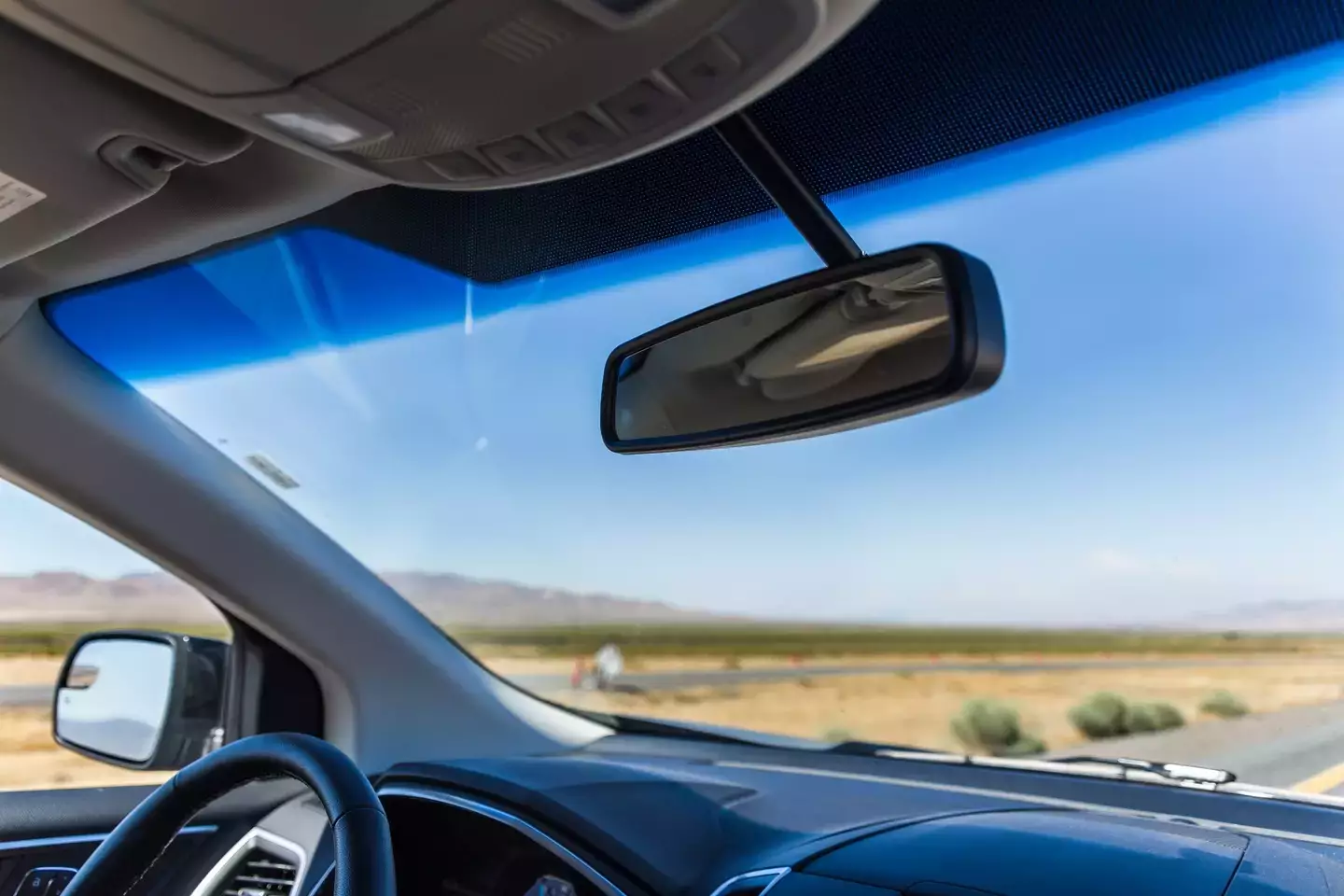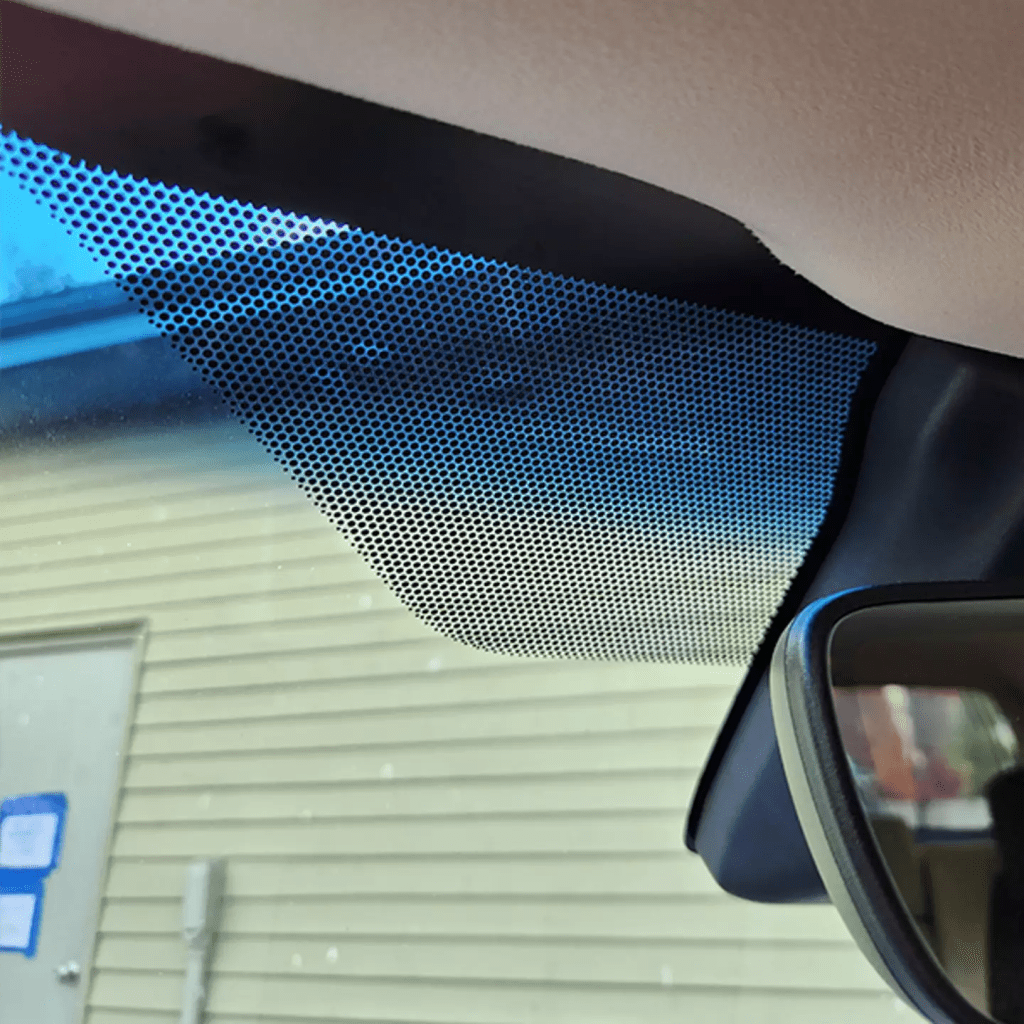If you’ve ever wondered about the black dots lining the edges of your car’s windshield, you’re not alone. These black dots, known as “frits,” are more than just a decorative feature—they serve essential purposes that enhance safety, functionality, and even the aesthetics of your vehicle. Here’s everything you need to know about the mysterious frits and why they’re a crucial part of your car’s windshield design.

The majority of motorists have no idea what the dots are for (Getty Stock Image)
What Are Frits? The Purpose of the Black Dots
The black dots or matrix pattern surrounding the edge of a windshield is called the “frit band.” Frits are actually a ceramic paint baked into the windshield glass during the manufacturing process, designed to create a rough surface for adhesives to grip onto, helping the glass stick more firmly to the car’s frame. While they may look like a simple design choice, frits play a multi-faceted role in the structure and function of your windshield.
Temperature Regulation and Heat Distribution
One of the primary purposes of frits is to help regulate the temperature of the windshield. When exposed to direct sunlight, the solid black band absorbs more heat than the transparent glass, which can lead to optical distortions. This phenomenon, known as “lensing,” occurs when a difference in temperature causes straight lines to appear curved or bent, creating a warped view that can be hazardous while driving.
The frit dots gradually fade in size, helping distribute the heat more evenly across the windshield. This gradual pattern helps reduce the intensity of heat where the solid black band meets the clear glass, allowing for a smooth, distortion-free view of the road ahead. In short, frits keep your windshield cool and clear, making your drive safer and more comfortable.
Protecting the Urethane Seal and Windshield Bonding
Another critical function of frits is to protect the urethane sealant that bonds the windshield to the car’s frame. This sealant is what keeps the glass firmly in place, even during high-speed drives or collisions. The black dots provide a barrier that shields this adhesive from direct sunlight, preventing it from breaking down over time. By protecting the urethane, frits help maintain a secure attachment between the glass and the car frame, which is essential for the structural integrity of the vehicle.
Without this protective layer, the adhesive could weaken, leading to potential issues with the windshield becoming loose or even detaching in extreme cases. Frits, therefore, not only support the windshield’s position but also play a role in the overall safety of the vehicle.
Improving Aesthetics with a Smooth Transition
While frits are essential for practical reasons, they also serve an aesthetic purpose. Imagine if the transition from the dark border to the clear glass was abrupt—it would be visually jarring and affect the overall look of the vehicle. The dot matrix design provides a gradual fade, creating a smooth, pleasing transition that’s easier on the eyes.
The pattern of small dots allows for a halftone effect, making the shift between the solid black border and the clear glass appear more subtle. This design element makes the windshield look seamless, enhancing the overall appearance of the vehicle’s front profile.

The black dots which line your windscreen have an important job to do (Getty Stock Image)
Providing Structural Contact Between Glass and Frame
Beyond aesthetics and protection, frits also serve as a direct contact point between the windshield glass and the car frame. Since the dots create a textured surface, they offer a stronger grip for adhesives compared to a completely smooth surface. This increased adhesion strength helps secure the windshield more effectively, ensuring it remains intact even under challenging conditions.
The rougher texture provided by the frit band is essential for bonding, making sure the windshield stays in place during high-impact situations. This structural contact is another way frits contribute to both safety and stability on the road.
Common Misconceptions About Frits
Given their unique appearance, it’s no surprise that many people have come up with their own theories about the purpose of frits. Here are a few common misconceptions that have been debunked:
- “They’re for defrosting the windshield.” While this seems logical, frits are not connected to the car’s heating or defrosting systems. Their primary function is heat distribution and adhesion.
- “They’re just a decorative feature.” Although frits do enhance the aesthetic of the windshield, their design is rooted in function first and foremost.
- “They’re part of a high-tech feature in modern cars.” Frits have been around for decades, even before cars were loaded with high-tech features. They’re a simple yet effective addition for bonding, protection, and heat regulation.

The Science Behind the “Dot Matrix” Pattern
The fading dot matrix pattern used in frits follows principles of halftone printing, where different dot sizes and spacing control the gradient of color. Larger dots in the solid band absorb more heat, while smaller dots transition the heat levels evenly into the transparent glass area. This distribution method minimizes any abrupt shifts in temperature across the windshield, thus preventing the optical distortions mentioned earlier.
The design of frits is both intentional and scientifically backed, allowing them to achieve their function with a visually appealing look.
Why Learning About Frits Matters for Drivers
Understanding the function of frits goes beyond satisfying curiosity. Knowing their purpose can help drivers recognize why windshields are manufactured this way and appreciate the small features that enhance driving safety. Frits are just one of the many components designed to keep drivers and passengers safe without them even realizing it.
Even on a practical level, knowing that the frit band protects the adhesive layer can encourage drivers to be mindful of any cracks or chips near the edges of the windshield. Damage to this area could weaken the adhesive and compromise the windshield’s stability, so it’s helpful to know how the frits play a part in maintaining the structure.
Conclusion: Frits Are Functional and Essential for Safe Driving
The black dots around your windshield may have seemed like a decorative afterthought, but they’re anything but. From temperature control and adhesive protection to improving aesthetics, frits perform multiple roles that keep your windshield safe and looking good. Next time you get in your car, take a second to appreciate the humble frit—an ingenious design feature that quietly keeps you safe on the road.


